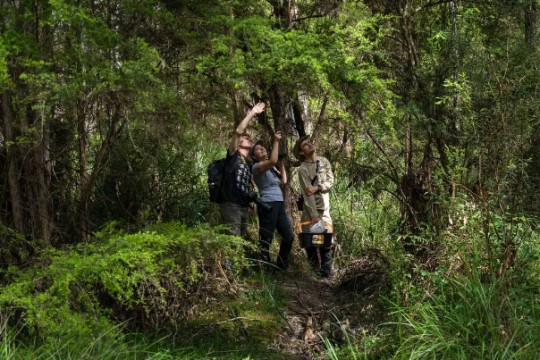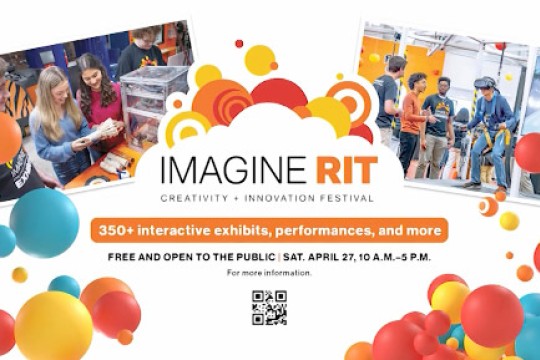RIT works with Staples on sustainability video
Animated short film illustrates impact of product choices on the environment
RIT Production Services
A screenshot of a new RIT animated video—made possible with funding from Staples Inc.—that illustrates the importance of sustainable purchasing decisions on the Earth.
A new video produced at Rochester Institute of Technology illustrates the importance of sustainable purchasing decisions, explaining through animation how it matters for people to buy “green” products and how those decisions can impact the environment.
Produced in part by the Staples Sustainable Innovation Lab (SSIL), located at and sponsored by RIT’s Golisano Institute for Sustainability (GIS) with funding from Staples Inc., the approximately two-minute video titled “small choices, Big Impact” was developed as a means to educate viewers on the broad topic of sustainability and the significance of their everyday purchases.
“We want to demonstrate to people how their purchases have a critical impact on the world around us,” said Brian Hilton, a senior staff engineer at GIS and director of SSIL who worked closely on the video with Patricia Donohue, senior engineer and Sustainable Supply Chain Program manager at the New York State Pollution Prevention Institute.
“When we approach people on the topic of sustainability, they don’t always understand the impact a single product can have in terms of material use, energy, transportation and chemical use,” Donohue said. “Hopefully after seeing this video they will have a better idea.”
Some of the factoids that scroll on screen throughout the engaging animation are daunting: 55 percent of the rivers and streams in the United States are too polluted to support healthy aquatic life; 40 percent of Americans live in areas with unhealthy air quality; and about one quarter of the Earth’s land area is considered highly degraded.
But the video—created in the studios at RIT Production Services—ends on a promising note and shares encouraging developments: 20 percent of the world’s electricity today is generated using renewable sources; more than 60 percent of paper in the U.S. is recycled each year; and material changes have restored the ozone layer to 1980 levels.
“People have to know and understand how their choices do make a difference and that there is hope for our planet,” Hilton observed.
He added that team members from both GIS and Staples would like this to be the first in a series of videos—with a new one produced about every six months—to delve into additional impacts of sustainability and environmentally benign purchasing decisions.
“One of our challenges is that sustainability is such a broad topic,” Donohue added. “We initially thought about addressing other subjects such as labor and poverty, climate change and ozone depletion, but we knew we had to keep it around two minutes.”
GIS aims to solicit feedback on the video from purchasing and sustainability groups and to develop webinars on topics such as eco-labels and choosing products that are remanufactured.
While the topic of sustainability may be elusive for some, Hilton said the videos will provide a simple, engaging way to educate and inform.
“Most of us look at sustainability and see such a large issue and ask, ‘what’s my impact on the planet?’” Hilton said. “All of us working together really can make a difference. It’s up to all of us to help drive change.”
Go to the Staple Sustainable Innovation Lab webpage to learn more.















